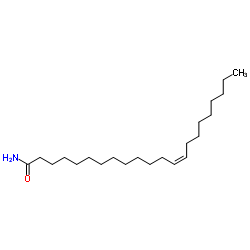bFGF enhances the development of the collateral circulation after acute arterial occlusion.
J O Chleboun, R N Martins, C A Mitchell, T V Chirila
Index: Biochem. Biophys. Res. Commun. 185(2) , 510-6, (1992)
Full Text: HTML
Abstract
An adequate collateral circulation is crucial to tissue survival subsequent to proximal major arterial occlusion. The precise mechanism of collateral blood vessel development and the biochemical mediators involved in this process are unknown. To evaluate the influence of a number of agents on the development of the collateral circulation, we developed a rat model of severe hind limb ischaemia. The recovery of blood flow after acute arterial occlusion was increased by exogenous basic fibroblast growth factor and heparin, and decreased by protamine. Erucamide (cis-13-docosenamide), an angiogenic lipid, had no effect on collateral blood flow. These results indicate that basic fibroblast growth factor and heparin are potential therapeutic agents in the treatment of peripheral vascular disease.
Related Compounds
| Structure | Name/CAS No. | Molecular Formula | Articles |
|---|---|---|---|
 |
cis-13-Docosenoamide
CAS:112-84-5 |
C22H43NO |
|
Kinetic investigation of erucamide synthesis using fatty aci...
2008-01-01 [J. Oleo Sci. 57(9) , 471-5, (2008)] |
|
An open port sampling interface for liquid introduction atmo...
2015-10-15 [Rapid Commun. Mass Spectrom. 29 , 1749-56, (2015)] |
|
Human exposure assessment to a large set of polymer additive...
2015-12-04 [J. Chromatogr. A. 1423 , 111-23, (2015)] |
|
Comparison of three gas chromatography methods for the deter...
2007-05-01 [J. Chromatogr. A. 1150(1-2) , 178-82, (2007)] |
|
Method for determination of fatty acid amides in polyethylen...
2009-11-27 [J. Chromatogr. A. 1216(48) , 8545-8, (2009)] |